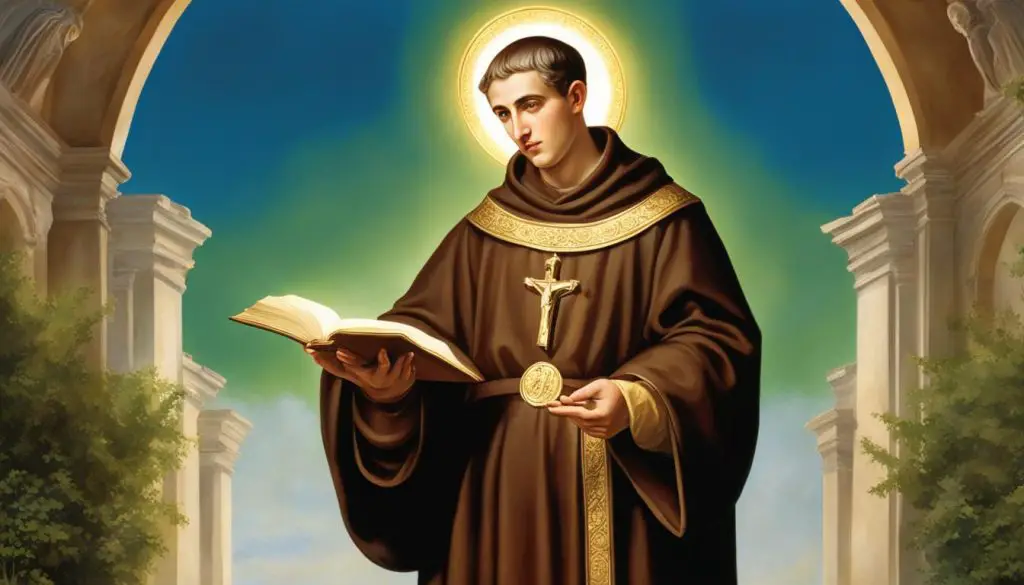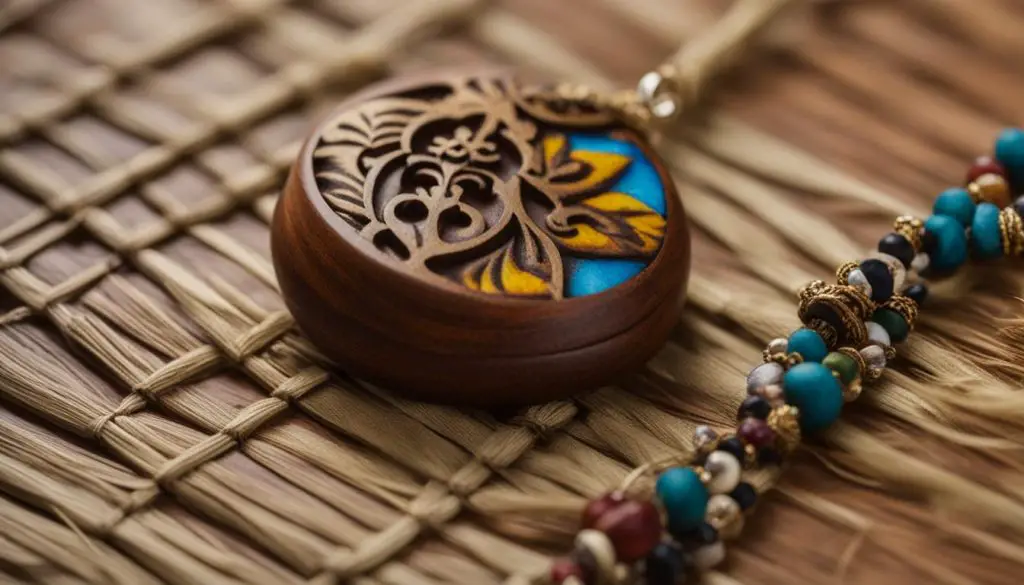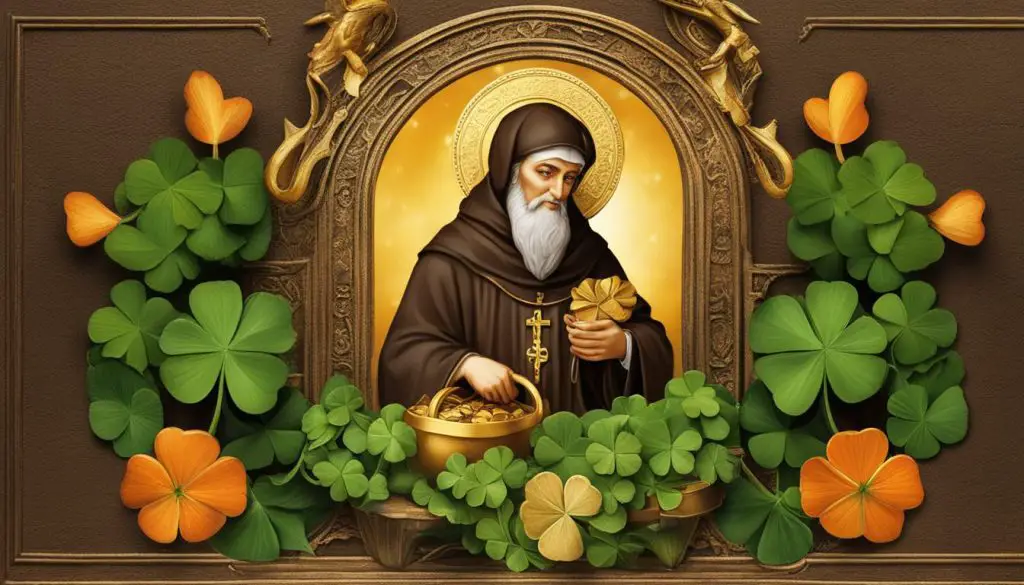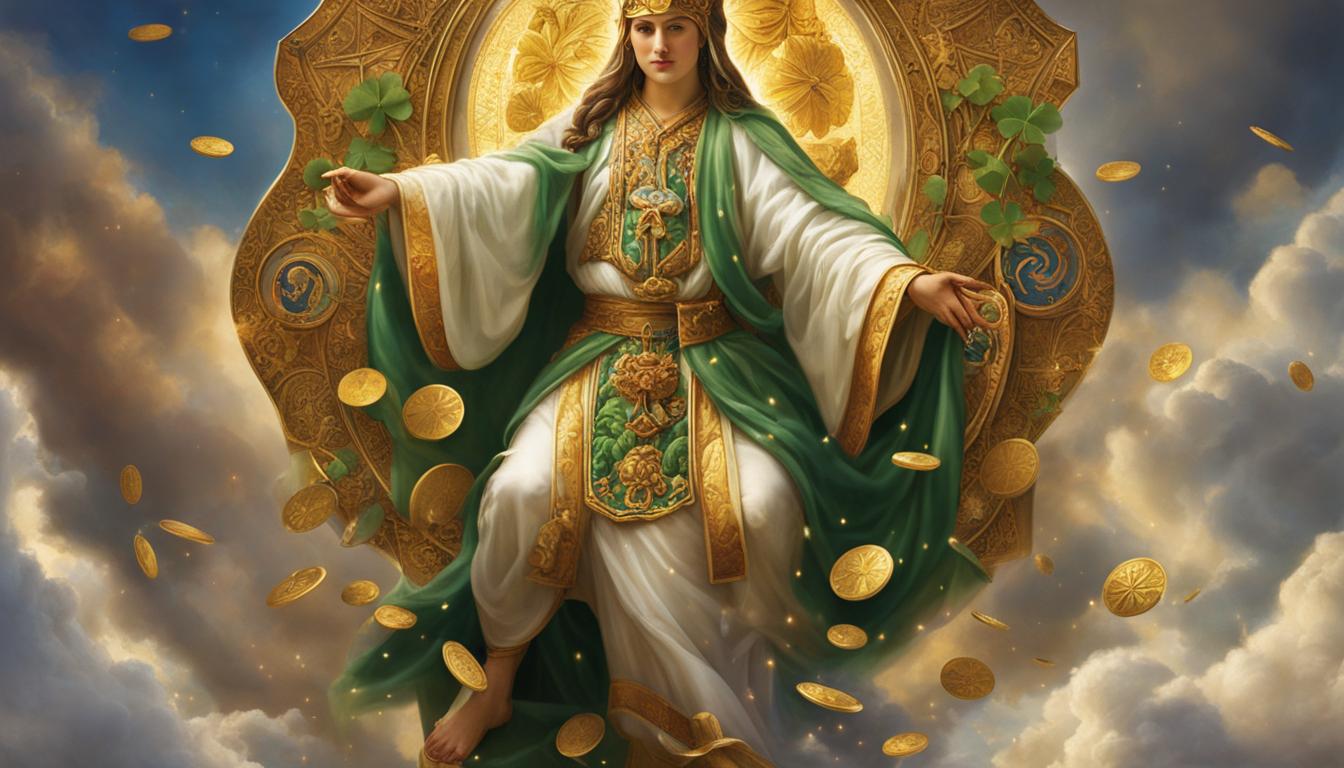Are you curious to know who the patron saint of good luck is? Look no further! In this article, we will uncover the identity of this revered figure and explore their fascinating story. So, sit back, relax, and prepare to be enlightened!
Contents
- 1 The Life of Saint Cajetan
- 2 The Order of the Theatines
- 3 Iconography of Saint Cajetan
- 4 Saint Anthony of Padua: Another Patron Saint of Good Fortune
- 5 The Spread of Saint Anthony’s Cult in the Kongo Kingdom
- 6 The Depictions of Saint Anthony in Kongo Art
- 7 Conclusion
- 8 FAQ
- 8.1 Who is Saint Cajetan?
- 8.2 What is the Order of the Theatines?
- 8.3 How is Saint Cajetan depicted in religious art?
- 8.4 Who is Saint Anthony of Padua?
- 8.5 How did Saint Anthony’s cult spread in the Kongo Kingdom?
- 8.6 What are the depictions of Saint Anthony like in Kongo art?
- 8.7 What is the conclusion of the patron saints of good luck?
- 9 Source Links
Key Takeaways:
- Saint Cajetan, born in Vicenza in 1480, is known as the patron saint of good luck.
- He dedicated his life to charitable work and founded the Order of the Theatines.
- The Order of the Theatines was a prominent Catholic reform movement.
- Saint Cajetan is depicted in religious art wearing the attire of a Theatine.
- Saint Anthony of Padua is another patron saint associated with good fortune.
The Life of Saint Cajetan
Saint Cajetan, born in Vicenza in 1480, led a remarkable life as a Catholic saint and is widely known as the patron saint of good luck. Raised by his strict Catholic mother after his father’s death, Cajetan showed a strong devotion to his faith from an early age. After completing his studies at the University of Padua, he was ordained as a priest.
Dedicated to serving others, Cajetan founded a hospital for the incurable in Venice, where he cared for those in need. This act of charity was just the beginning of his lifelong dedication to helping the less fortunate. It was during this time that Cajetan became involved in the establishment of the Order of the Theatines, an order of regular clerics committed to living a simple and devout life.
The Order of the Theatines, founded by Cajetan and Cardinal Giovanni Pietro Carafa in Rome, became a prominent Catholic reform movement. With a focus on assisting and protecting the poor from moneylenders, the Theatines played a significant role in Italian politics. Cajetan’s contributions to the order and his devotion to charitable work solidified his legacy as a Catholic saint and the patron saint of good luck.
| Fact | Detail |
|---|---|
| Birthplace | Vicenza, Italy |
| Year of Birth | 1480 |
| Order Founded | Theatines |
| Notable Contribution | Hospital for the incurable |
| Patron Saint of | Good Luck |
The Order of the Theatines
The Order of the Theatines, founded by Saint Cajetan and Cardinal Giovanni Pietro Carafa, played a significant role in the Catholic reform movements of the 16th century. As an Order of Regular Clerics, the Theatines aimed to combat the corruption within the Catholic Church and bring about spiritual renewal.
The Theatines focused on helping the poor and protecting them from moneylenders who took advantage of their vulnerability. Their activities had a profound impact on Italian politics, challenging the existing power structures and advocating for social justice.
One notable member of the Theatines was Giovanni Pietro Carafa, who later became Pope Paul IV. His leadership within the Order and his commitment to the ideals of the Theatines exemplified the spirit of this Catholic reform movement.
| Order of the Theatines | Catholic Reform Movements | Giovanni Pietro Carafa |
|---|---|---|
| A religious order founded by Saint Cajetan and Giovanni Pietro Carafa | A movement aimed at reforming the Catholic Church in the 16th century | A Theatine member who later became Pope Paul IV |
| Committed to assisting the poor and protecting them from exploitation | Advocated for social justice and challenged existing power structures | Exemplified the ideals of the Theatines and provided leadership within the Order |
The Order of the Theatines continues to serve the Catholic Church today, carrying on the legacy of Saint Cajetan and the spirit of Catholic reform. Their dedication to uplifting the marginalized and promoting social and spiritual renewal is an inspiration to all.
Iconography of Saint Cajetan
Saint Cajetan, the patron saint of good luck, is prominently depicted in religious art within the Catholic Church. These artistic representations capture the essence of his life and serve as a visual reminder of his virtues. Let’s explore the iconography associated with Saint Cajetan.
The Attire of a Theatine
One of the distinctive features in the depiction of Saint Cajetan is his attire, which reflects his affiliation with the Theatine order. He is often portrayed wearing the traditional black cassock, a symbol of his dedication to the priesthood and his role as a founder of the Order of the Theatines. This attire serves as a reminder of his commitment to serving the Catholic Church and his mission of assisting the poor and sick.
The Rosary and Devotion
Another prominent element in the iconography of Saint Cajetan is the presence of a rosary, often held in his hands. The rosary is a symbol of devotion and prayer, highlighting Saint Cajetan’s deep spirituality and his reliance on faith. It represents his commitment to seeking divine intervention and intercession for those in need, particularly in matters of luck and fortune.
A Bird and a Lily
Traditional depictions of Saint Cajetan include the presence of a bird and a lily. The bird symbolizes the freedom and purity of the soul, while the lily represents innocence and virtue. These symbols further emphasize Saint Cajetan’s dedication to a life of holiness and his mission to bring blessings and good fortune to those who seek his intercession.
| Iconography of Saint Cajetan | Meaning |
|---|---|
| The Attire of a Theatine | Reflects his affiliation with the Theatine order and his commitment to serving the Catholic Church. |
| The Rosary and Devotion | Symbolizes his deep spirituality, reliance on prayer, and seeking divine intercession. |
| A Bird and a Lily | Represents the freedom and purity of the soul, as well as innocence and virtue. |
Saint Anthony of Padua: Another Patron Saint of Good Fortune
In addition to Saint Cajetan, Saint Anthony of Padua is also considered a patron saint of good fortune. Many Roman Catholics call upon him for intercession when they need help finding something, as he is widely known as the patron saint of lost and stolen articles. But did you know that in the Kongo Kingdom, he was known as “Toni Malau,” the Saint of Good Fortune?
Throughout history, various Catholic saints have been associated with different aspects of life, and Saint Anthony’s role as the patron saint of lost and stolen articles has made him a widely revered figure. People have turned to him for centuries, seeking his help in finding misplaced items or recovering stolen belongings. His reputation as a miracle worker in these matters has earned him a special place in the hearts of those in need of good luck.
The Kongo Kingdom, located in present-day Central Africa, also recognized Saint Anthony as a symbol of good fortune. With the arrival of Italian Capuchin fathers in the region in 1645, the cult of Saint Anthony spread rapidly. Local interpretations of the saint, known as Toni Malau, became prevalent, and his images were used as spiritual amulets for protection and good fortune. The popularity of his cult in the Kongo Kingdom demonstrates the universal appeal of seeking luck and blessings in various cultures and regions.

Saint Anthony’s Influence in the Kongo Kingdom
The presence of Saint Anthony’s cult in the Kongo Kingdom had a significant impact on the local population. The adoption of his images by the short-lived Antonian movement showcased the powerful influence of Saint Anthony’s connection to good fortune. These figures, known as Toni Malau, were sculpted with great care and attention to detail, emphasizing the saint’s association with the Christ child, a lily, or a book. The imagery conveyed not only his role as a patron saint of good fortune but also his deep spiritual significance.
The Metropolitan Museum of Art houses a collection of remarkable statuettes of Saint Anthony from the Kongo Kingdom. These artifacts provide a tangible glimpse into the rich cultural exchange between Europe and Africa during this period. They offer a unique perspective on how the Catholic faith and the cult of Saint Anthony intersected with local beliefs and practices.
Ambassadors of Good Fortune
Saint Cajetan and Saint Anthony of Padua, both patrons of good luck and fortune, have left lasting legacies. Their influence spans across continents and cultures, offering hope and intercession to those seeking blessings in their lives. Whether it’s Saint Cajetan’s dedication to charitable work or Saint Anthony’s ability to help recover lost items, these saints continue to inspire devotion and reverence worldwide.
The Spread of Saint Anthony’s Cult in the Kongo Kingdom
The popularity of Saint Anthony in the Kongo Kingdom can be attributed to the spread of his cult by Italian Capuchin fathers who arrived in Kongo in 1645. These missionaries, dedicated to spreading the Catholic faith, introduced the teachings and iconography of Saint Anthony to the local population. Over time, the figure of Saint Anthony, known as Toni Malau, became deeply embedded in Kongo culture and spirituality.
The Kongo people embraced the Antonian movement, a religious movement that emerged in the late 17th century. The movement took its name from the primary role played by Saint Anthony in its rituals and beliefs. The Antonians adopted the images of St. Anthony as a sign of their allegiance and used them as protective amulets. These locally made figures of Saint Anthony were seen as powerful spiritual objects, believed to bring good fortune and protection to their owners.
“The Antonian movement brought a sense of unity and empowerment to the people of the Kongo Kingdom. The figure of Saint Anthony became an iconic symbol of hope and prosperity, providing spiritual guidance and intercession in their daily lives.”
The spread of the cult of Saint Anthony in the Kongo Kingdom had a lasting impact on the region’s art and religious practices. The Metropolitan Museum of Art houses extraordinary statuettes of St. Anthony from the Kongo Kingdom, showcasing the fusion of Catholic iconography with local artistic traditions. These statuettes depict St. Anthony holding the Christ child, a lily, or a book, reinforcing his identity as the Saint of Good Fortune.
| Symbols of Saint Anthony in Kongo Art | Description |
|---|---|
| Christ child | Represents the divine aspect of Saint Anthony and his close connection to Jesus. |
| Lily | Symbolizes purity and spiritual fertility, reflecting the saint’s virtuous nature. |
| Book | Signifies knowledge and wisdom, highlighting the saint’s role as a teacher and guide. |
The images of Saint Anthony in Kongo art not only serve as aesthetic objects but also carry profound spiritual meaning for the community. They represent a unique synthesis of Catholic and African beliefs, embodying the fusion of traditions and the resilience of faith in the face of adversity.

The Depictions of Saint Anthony in Kongo Art
The Metropolitan Museum of Art houses extraordinary statuettes of St. Anthony from the Kongo Kingdom. These beautifully crafted sculptures showcase the artistic prowess of the Kongo people and their deep devotion to St. Anthony.
The statuettes depict St. Anthony in various poses, each representing a different aspect of his identity as the patron saint of good fortune. In some figures, he is shown holding the Christ child, symbolizing his close relationship with Jesus and his role as a protector and intercessor for those seeking luck and blessings.
Other statues depict St. Anthony holding a lily or a book, emphasizing his purity and wisdom. The images capture the essence of St. Anthony’s character and convey a sense of reverence and awe. Through their intricate details and symbolic elements, these statuettes serve as a visual representation of the spiritual connection between the Kongo people and St. Anthony.
| Attributes | Meaning |
|---|---|
| St. Anthony holding the Christ child | Symbolizes his role as a protector and intercessor for those seeking luck and blessings. |
| St. Anthony holding a lily | Represents his purity and devotion to God. |
| St. Anthony holding a book | Symbolizes his wisdom and knowledge. |

“These beautifully crafted sculptures showcase the artistic prowess of the Kongo people and their deep devotion to St. Anthony.”
Legacy and Cultural Significance
The depictions of St. Anthony in Kongo art highlight the enduring legacy of his cult in the region. By incorporating their unique artistic style and cultural symbolism, the Kongo people have created a visual language through which they express their beliefs and spirituality.
These statuettes serve as a powerful testament to the influence of Catholicism in the Kongo Kingdom and the profound impact of St. Anthony’s teachings. They also provide a fascinating insight into the interplay between European religious iconography and African artistic traditions.
The presence of St. Anthony in Kongo art reflects the universal appeal of his message of hope, luck, and protection. These artistic representations not only enrich the cultural heritage of the Kongo people but also serve as a reminder of the enduring power of faith and devotion.
Conclusion
In conclusion, Saint Cajetan and Saint Anthony of Padua hold a special place as patron saints of good luck. These revered figures have left an indelible mark on the Catholic Church, with their devotion to charitable work and their associations with fortune and prosperity.
Saint Cajetan, also known as the patron saint of good luck, dedicated his life to helping the poor and sick, leaving behind a legacy of compassion and service. His Order of the Theatines continues to serve the Catholic Church to this day, carrying on his mission of aiding those in need.
Similarly, Saint Anthony of Padua is widely recognized as a patron saint of good fortune, especially when it comes to finding lost or stolen articles. His cult spread far beyond his birthplace, with the Kongo Kingdom embracing him as Toni Malau, the Saint of Good Fortune. The popularity of Saint Anthony’s cult in the Kongo Kingdom is evident in the local art and spiritual amulets dedicated to him.
The stories of Saint Cajetan and Saint Anthony inspire hope and offer a source of intercession for those seeking blessings and luck in their lives. The enduring devotion to these patron saints of good luck continues to inspire and bring comfort to people around the world.
FAQ
Who is Saint Cajetan?
Saint Cajetan, born in the Italian city of Vicenza in 1480, is known as the patron saint of good luck. He was extensively involved in charitable work, assisting the poor and sick during the plague. He founded the Order of the Theatines and his relics are kept in the Church of San Paolo Maggiore in Naples.
What is the Order of the Theatines?
The Order of the Theatines, founded by Saint Cajetan and Cardinal Giovanni Pietro Carafa in Rome, was a prominent Catholic reform movement. The Theatines aimed to assist and protect the poor from moneylenders. Their activities had a significant impact on Italian politics.
How is Saint Cajetan depicted in religious art?
Saint Cajetan is often portrayed wearing the attire of a Theatine and holding a rosary in his hands. He is sometimes depicted with the Child Christ because of an apparition of the Virgin Mary to him. Traditional attributes of St. Cajetan include a bird and a lily.
Who is Saint Anthony of Padua?
Saint Anthony of Padua is also considered a patron saint of good fortune. He is widely known as the patron saint of lost and stolen articles. In the Kongo Kingdom, he was known as “Toni Malau,” the Saint of Good Fortune.
How did Saint Anthony’s cult spread in the Kongo Kingdom?
The cult of Saint Anthony spread in the Kongo Kingdom through the efforts of Italian Capuchin fathers who arrived in Kongo in 1645. Locally made figures of Saint Anthony, known as Toni Malau, became common in the Kongo Kingdom, particularly during the Antonian movement.
What are the depictions of Saint Anthony like in Kongo art?
The Metropolitan Museum of Art houses extraordinary statuettes of St. Anthony from the Kongo Kingdom. The figures depict St. Anthony holding the Christ child or a lily or a book. These attributes confirm his identity as the Saint of Good Fortune.
What is the conclusion of the patron saints of good luck?
Saint Cajetan and Saint Anthony of Padua are revered as patron saints of good luck. Their contributions to the Catholic Church and their association with fortune and prosperity have made them icons of hope and intercession for those seeking luck and blessings in their lives. The cults of these saints continue to inspire devotion and reverence worldwide.





